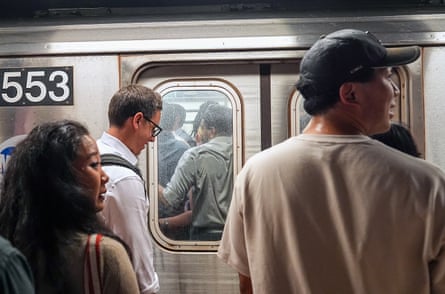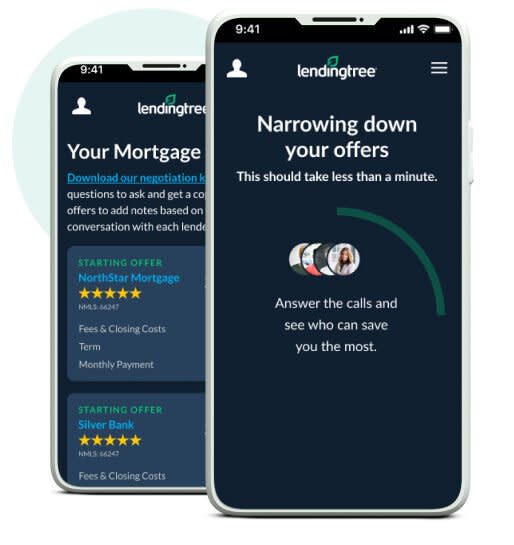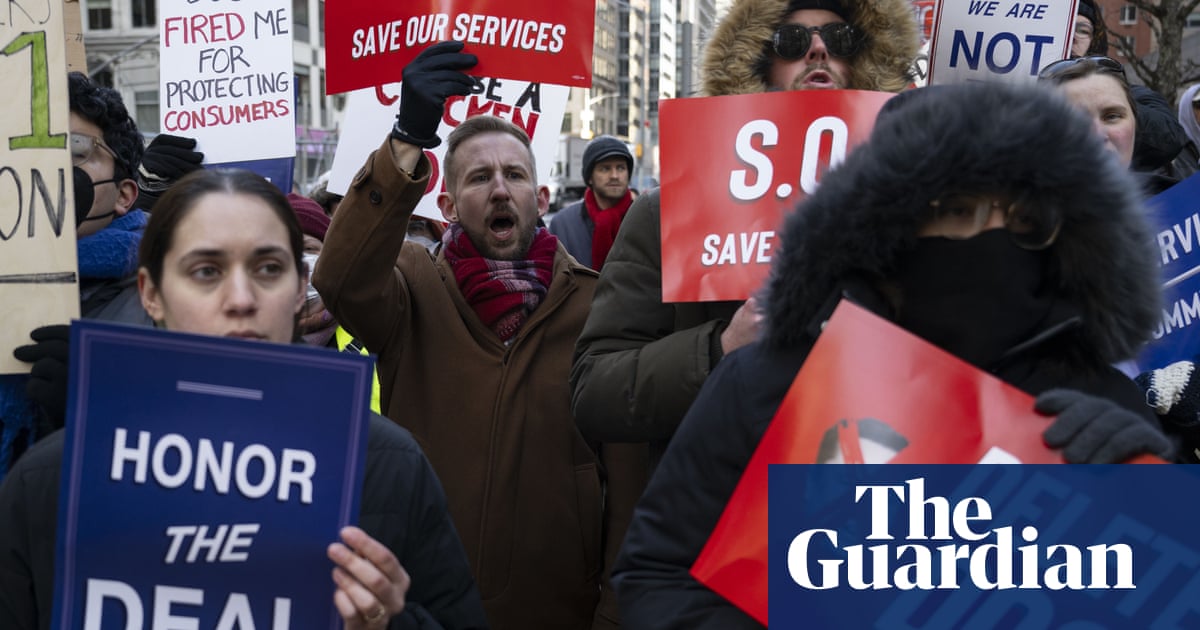It has faced threats and lawsuits and even had its death proclaimed by Donald Trump as he startlingly depicted himself as a king in a social media post. But New York City’s congestion charge scheme for cars has now survived its first six months, producing perhaps the fastest ever environmental improvement from any policy in US history.
New York vaulted into a global group of cities – such as London, Singapore and Stockholm – that charge cars for entering their traffic-clogged metropolitan hearts but also ushered in a measure that was unknown to Americans and initially unpopular with commuters, and was confronted by a new Trump administration determined to tear it down.
But the six-month anniversary, on 5 July, of congestion pricing highlights a string of remarkable successes. Traffic congestion in Manhattan, site of the $9 charge zone, is substantially down, cars and buses are moving faster, air quality is improving as carbon emissions drop, a creaking public transportation system has new verve and there are fewer car accidents, injuries and opportunities for incandescent New Yorker honking and yelling.
In an era of assaults upon climate policy and societal betterment in general across US and around the world, New York’s congestion busting has been a rare flicker of progress in 2025. “It’s been even more obviously beneficial than even the most fervent proponents had hoped, and there have been really tangible improvements that are really gratifying,” said Ben Furnas, executive director of Transportation Alternatives, a New York-based pro-transit group. “It’s been incredible to see.”
Congestion pricing in New York had a tortured birth – the state’s governor, Kathy Hochul, initially delayed it and cut the charge for drivers from $15 to $9, citing cost-of-living concerns – but since its January introduction the system appears to be achieving its aims.
Spanning the southern tip of downtown Manhattan northwards to 60th Street, the congestion charge zone has slashed traffic delays by a quarter, with around 2m fewer cars a month now entering streets previously gridlocked in traffic. Vehicles that were previously crawling at a pace slower than a horse and cart are now moving more smoothly, with traffic speeds rising by 15%.
Carbon pollution, meanwhile, has dropped by about 2.5%, with air pollution such as soot that can bury deep in people’s lungs also down. Despite the faster traffic, fewer people are being directly hurt by car accidents, too. The experiment has been a reminder that cities aren’t intrinsically noisy even if cars are – Furnas said that one of his favorite stats is that noise complaints along Canal Street, a key artery in lower Manhattan, have reduced by 70%.
“The quality-of-life improvement has been dramatic,” he said. “Reducing pollution is often seen to involve a lot of sacrifices, but this has been different. People can see the improvements to their lives. There was this cynical assumption that this was a bullshit charge and life will stay the same but that assumption has gone away now.”
Scaling public unpopularity in this way isn’t new – London’s congestion charge met initial opposition in 2003 and then, more recently, an expansion of the city’s ultra-low emission zone (or Ulez) was bitterly contested. London’s air quality has improved markedly and support has since edged up, though, a forerunner of the New York experience, where more people now support the charge than oppose it – a reversal of what the polls showed prior to its imposition.
A primary motivation for the congestion charge was to raise funds for the beleaguered Metropolitan Transportation Authority (MTA), which presides over one of the most extensive public transport systems in the world but has struggled with a spluttering subway that runs on antediluvian technology through often squalid stations. Fears of subway-based crime, regularly amplified by the Trump administration, have also bedeviled the MTA’s attempts to lure commuters back following Covid.
Congestion pricing revenue, though, is on track to reach $500m this year, allowing upgrades to the subway, the purchase of several hundred new electric buses and improvements to regional rail. Hochul, with the zeal of new convert, said the scheme has been a “huge success” and pointed out that people are still flocking to Manhattan stores, restaurants and Broadway shows, with pedestrian activity up 8% in May compared with the same month last year. Subway visits have also increased by 7%.
“We’ve also fended off five months of unlawful attempts from the federal government to unwind this successful program and will keep fighting – and winning – in the courts,” the governor said. “The cameras are staying on.”
Trump has continued his quest to kill off congestion charging in his native city, however, prematurely declaring success in this endeavor in a memorable February post on X in which he was depicted in an oil painting wearing a crown, triumphantly standing in front of the Empire State Building. “CONGESTION PRICING IS DEAD. Manhattan, and all of New York, is SAVED. LONG LIVE THE KING!” the president wrote.
Trump’s Department of Transportation has attempted to withdraw federal approval of the scheme but its deadlines to end congestion pricing have so far been thwarted by the courts and the department has, in frustration, replaced its own lawyers, accusing them of undermining its case.
Sean Duffy, the US transportation secretary, has said the charge is unfair to drivers and is “classist” against the working poor (even though they overwhelmingly take buses or trains, rather than drive), and threatened to cut federal funding to New York transit.

“If you can’t keep your subway safe, if people can’t go to the subway and not be afraid of being stabbed or thrown in front of tracks or burned, we are going to pull your money,” Duffy said in March.
The administration confirmed it will forge ahead with its legal battle. “In the 11th hour of his failing administration, Joe Biden cowardly approved this absurd experiment that makes federally funded roads inaccessible to many taxpayers without giving them a toll-free alternative,” said a Department of Transportation spokesperson.
“We can all agree that the New York City subway needs fixing, but drivers should not be expected to foot the bill.”
But the series of courtroom defeats suffered by the Trump administration have strengthened the congestion charge’s future, according to Michael Gerrard, an environmental law expert at Columbia Law School. “The administration have suffered a series of resounding defeats, they haven’t got anywhere,” said Gerrard. “It’s clear that Donald Trump doesn’t like New York City and wants to do anything he can to increase the use of fossil fuels. I don’t know if Donald Trump has ever been on the subway.”
Other opposition remains, too, although it has become more muted of late. A leading critique of congestion pricing was that it will simply pile up traffic at the boundaries of the charge zone, although a recent report found the opposite has occurred – traffic delays are down 10% in the Bronx and have even been reduced by 14% in the commuter belt of Bergen county, in New Jersey.
“Conceptually it’s a good idea, but let’s get a fair deal for Jersey,” conceded Phil Murphy, governor of New Jersey, on a recent podcast with the comedian Hasan Minhaj. Murphy previously called the charge a “disaster” and is still involved in legal action to stop it, although he now says he will accept a “deal” whereby his state gets some of the revenue and the toll is lowered somewhat.
Murphy acknowledged traffic is down but he questions if it will last. “The data from London suggests it won’t continue,” said the governor, pointing to how the UK capital is now the most congested city in Europe, with drivers spending an average of 101 hours sitting in traffic last year, despite its own toll.
However, others think New York may be different, a long-term habit switch from driving thanks to its dense public transport links. If it survives its Trumpian attack, the scheme may even be replicated by cities elsewhere in the US. If highways and bridges can be tolled, as they often are in the US, why not the core of cities too?
“It’s been such a success that I think others will look at this,” said Furnas. “Not everywhere has New York’s public transit, but we would be wise to apply these sort of benefits to other places, too.”

 German (DE)
German (DE)  English (US)
English (US)  Spanish (ES)
Spanish (ES)  French (FR)
French (FR)  Hindi (IN)
Hindi (IN)  Italian (IT)
Italian (IT)  Russian (RU)
Russian (RU)  6 hours ago
6 hours ago























Comments